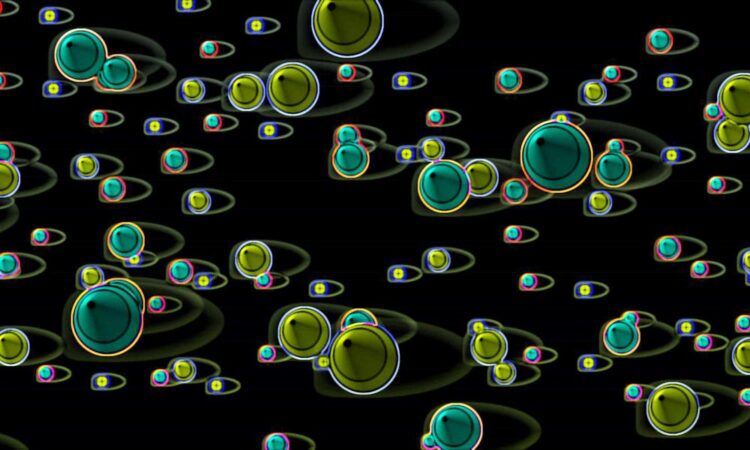Why there is no speed limit in the superfluid universe

Researchers found the reason for the absence of the speed limit: exotic particles that stick to all surfaces in the superfluid
Credit: Lancaster University
Physicists from Lancaster University have established why objects moving through superfluid helium-3 lack a speed limit in a continuation of earlier Lancaster research.
Helium-3 is a rare isotope of helium, in which one neutron is missing. It becomes superfluid at extremely low temperatures, enabling unusual properties such as a lack of friction for moving objects.
It was thought that the speed of objects moving through superfluid helium-3 was fundamentally limited to the critical Landau velocity, and that exceeding this speed limit would destroy the superfluid. Prior experiments in Lancaster have found that it is not a strict rule and objects can move at much greater speeds without destroying the fragile superfluid state.
Now scientists from Lancaster University have found the reason for the absence of the speed limit: exotic particles that stick to all surfaces in the superfluid.
The discovery may guide applications in quantum technology, even quantum computing, where multiple research groups already aim to make use of these unusual particles.
To shake the bound particles into sight, the researchers cooled superfluid helium-3 to within one ten thousandth of a degree from absolute zero (0.0001K or -273.15°C). They then moved a wire through the superfluid at a high speed, and measured how much force was needed to move the wire. Apart from an extremely small force related to moving the bound particles around when the wire starts to move, the measured force was zero.
Lead author Dr Samuli Autti said: “Superfluid helium-3 feels like vacuum to a rod moving through it, although it is a relatively dense liquid. There is no resistance, none at all. I find this very intriguing.”
PhD student Ash Jennings added: “By making the rod change its direction of motion we were able to conclude that the rod will be hidden from the superfluid by the bound particles covering it, even when its speed is very high.” “The bound particles initially need to move around to achieve this, and that exerts a tiny force on the rod, but once this is done, the force just completely disappears”, said Dr Dmitry Zmeev, who supervised the project.
###
The Lancaster researchers included Samuli Autti, Sean Ahlstrom, Richard Haley, Ash Jennings, George Pickett, Malcolm Poole, Roch Schanen, Viktor Tsepelin, Jakub Vonka, Tom Wilcox, Andrew Woods and Dmitry Zmeev. The results are published in Nature Communications.
Media Contact
All latest news from the category: Physics and Astronomy
This area deals with the fundamental laws and building blocks of nature and how they interact, the properties and the behavior of matter, and research into space and time and their structures.
innovations-report provides in-depth reports and articles on subjects such as astrophysics, laser technologies, nuclear, quantum, particle and solid-state physics, nanotechnologies, planetary research and findings (Mars, Venus) and developments related to the Hubble Telescope.
Newest articles

Sea slugs inspire highly stretchable biomedical sensor
USC Viterbi School of Engineering researcher Hangbo Zhao presents findings on highly stretchable and customizable microneedles for application in fields including neuroscience, tissue engineering, and wearable bioelectronics. The revolution in…

Twisting and binding matter waves with photons in a cavity
Precisely measuring the energy states of individual atoms has been a historical challenge for physicists due to atomic recoil. When an atom interacts with a photon, the atom “recoils” in…

Nanotubes, nanoparticles, and antibodies detect tiny amounts of fentanyl
New sensor is six orders of magnitude more sensitive than the next best thing. A research team at Pitt led by Alexander Star, a chemistry professor in the Kenneth P. Dietrich…





















